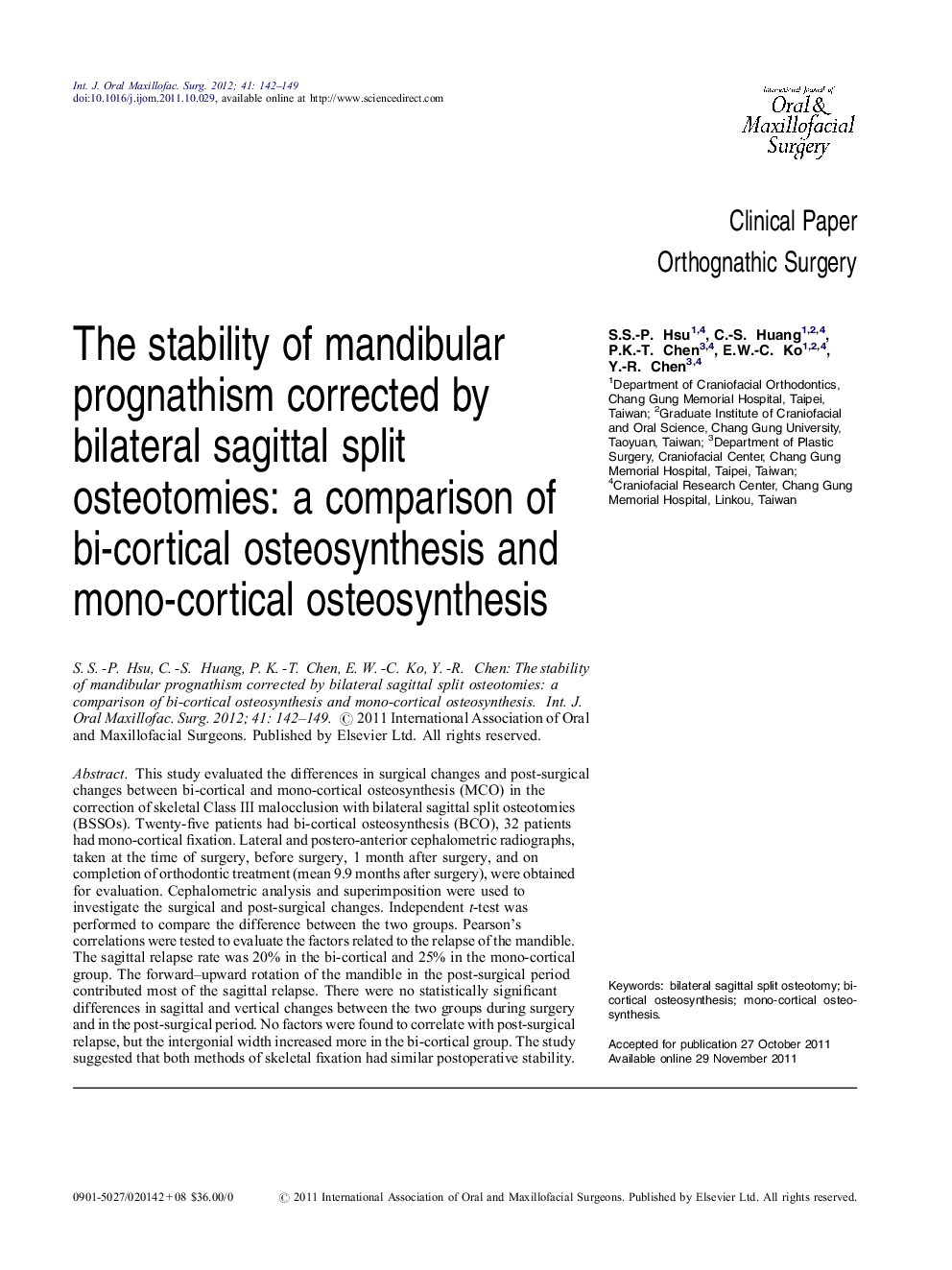| Article ID | Journal | Published Year | Pages | File Type |
|---|---|---|---|---|
| 3133261 | International Journal of Oral and Maxillofacial Surgery | 2012 | 8 Pages |
This study evaluated the differences in surgical changes and post-surgical changes between bi-cortical and mono-cortical osteosynthesis (MCO) in the correction of skeletal Class III malocclusion with bilateral sagittal split osteotomies (BSSOs). Twenty-five patients had bi-cortical osteosynthesis (BCO), 32 patients had mono-cortical fixation. Lateral and postero-anterior cephalometric radiographs, taken at the time of surgery, before surgery, 1 month after surgery, and on completion of orthodontic treatment (mean 9.9 months after surgery), were obtained for evaluation. Cephalometric analysis and superimposition were used to investigate the surgical and post-surgical changes. Independent t-test was performed to compare the difference between the two groups. Pearson's correlations were tested to evaluate the factors related to the relapse of the mandible. The sagittal relapse rate was 20% in the bi-cortical and 25% in the mono-cortical group. The forward–upward rotation of the mandible in the post-surgical period contributed most of the sagittal relapse. There were no statistically significant differences in sagittal and vertical changes between the two groups during surgery and in the post-surgical period. No factors were found to correlate with post-surgical relapse, but the intergonial width increased more in the bi-cortical group. The study suggested that both methods of skeletal fixation had similar postoperative stability.
